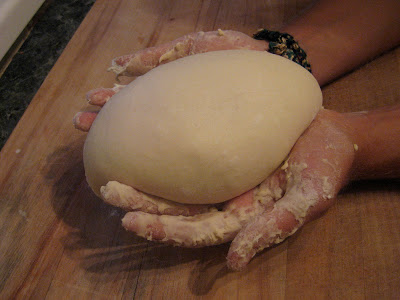I've been trying out different types of more unusual flour lately, so basically not your typical wheat flour. There are many different varieties of wheat and many different grains that can be used for making bread, and one such is spelt. Spelt is a very old cousin of modern wheat and was first cultivated 9000 years ago. It's a very hardy grain and that is probably why it was so popular in the past, but with the arrival of more productive wheat varieties spelt started losing its popularity. Until now that is. More and more people are talking about the quality and the flavour of spelt flavour and it's even appeared on tv programms. That's how I heard of it and I thought I would just try it out as I love experimenting with new ingredients.
And I must say I am so impressed with spelt flour. As you can see in the picture, I tried organic white spelt flour from Doves Farm who are a UK based company specialising in unusual and organic types of flour. Doves Farm have a large variety of heritage grain flour available and if you live in the UK and are into breadmaking it is really worth having a look at their website: http://www.dovesfarm.co.uk/
Of course there also other companies and farms that produce and sell special types of flour in the UK, but I have really quite enjoyed trying out different products from Doves Farm. If you're from another part of the world I am sure there also companies and health food stores who specialise in heritage grain flour. Just keep looking, it's worth the effort!
Now that you know where you can source your spelt flour, let's actually talk about this amazing flour. I just did a basic bread loaf yesterday and it was so satisfying to work the dough. It's an incredibly light and elastic dough. It also doesn't need as much water as some types of flour do, as you can tell by my sticky hands.
Of course there also other companies and farms that produce and sell special types of flour in the UK, but I have really quite enjoyed trying out different products from Doves Farm. If you're from another part of the world I am sure there also companies and health food stores who specialise in heritage grain flour. Just keep looking, it's worth the effort!
Now that you know where you can source your spelt flour, let's actually talk about this amazing flour. I just did a basic bread loaf yesterday and it was so satisfying to work the dough. It's an incredibly light and elastic dough. It also doesn't need as much water as some types of flour do, as you can tell by my sticky hands.
It's a very easy dough to work with and really doesn't need that long to rise, about half an hour will do for the first rising. Already at this raw state the smell and taste of the dough is quite unique. You could probably make all kinds of bread using this white spelt flour and use it instead of normal strong white bread flour. I'm sure it would be particularly good to use for French baguettes, Ciabatta and nice thin crust pizzas.
After a second rising I put the bread into a preheated 250 °C oven and again I was impressed how well the bread expands during baking. Just for those who are wondering, yes 250 °C is a high temperature and I only leave it this high for 10 minutes or else the bread might burn and then I turn it down to about 200-220 °C for 20 minutes depending on the bread. And here's the result of my experiment:
A beautifully risen and baked loaf of bread with an incredible smell that fills the entire house. After 20 minutes of resting we cut into the loaf and it is the softest and fluffiest texture I've ever had in any bread while the crust was so nice and crunchy. Really a perfect balance of soft inside and crunchy outside. And the taste is just so good. I'm normally not a fan of white bread and generally tend to add a bit of wholemeal or other stronger tasting flour into the mix, but spelt flour has enough aroma while being incredibly light that really makes it stand out from regular white bread flour. We tried the bread with just a bit of butter and good quality olive oil and it is really divine. And for breakfast we tried it with different types of jam and spreads like peanut butter, and it works particularly well with cream cheese. It is a perfect breakfast bread really.
This bread has definitely been a hit and I will be using spelt flour a lot more from now on. I am also looking forward to trying out wholemeal spelt flour in the next few days and I will let you know how that works out. So if you're into breadmaking, or even a complete novice, spelt is the way to go, no doubt about it.



No comments:
Post a Comment